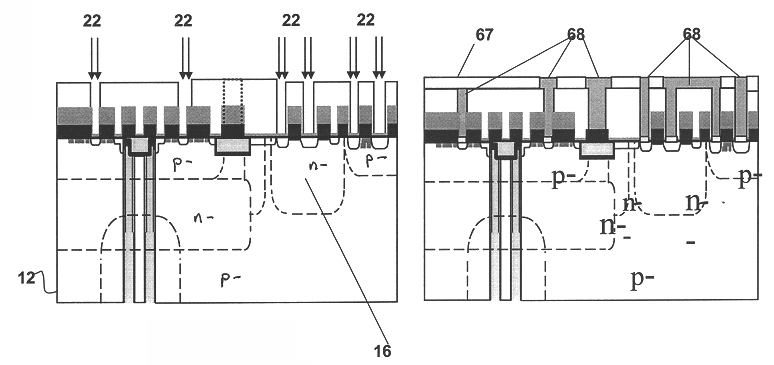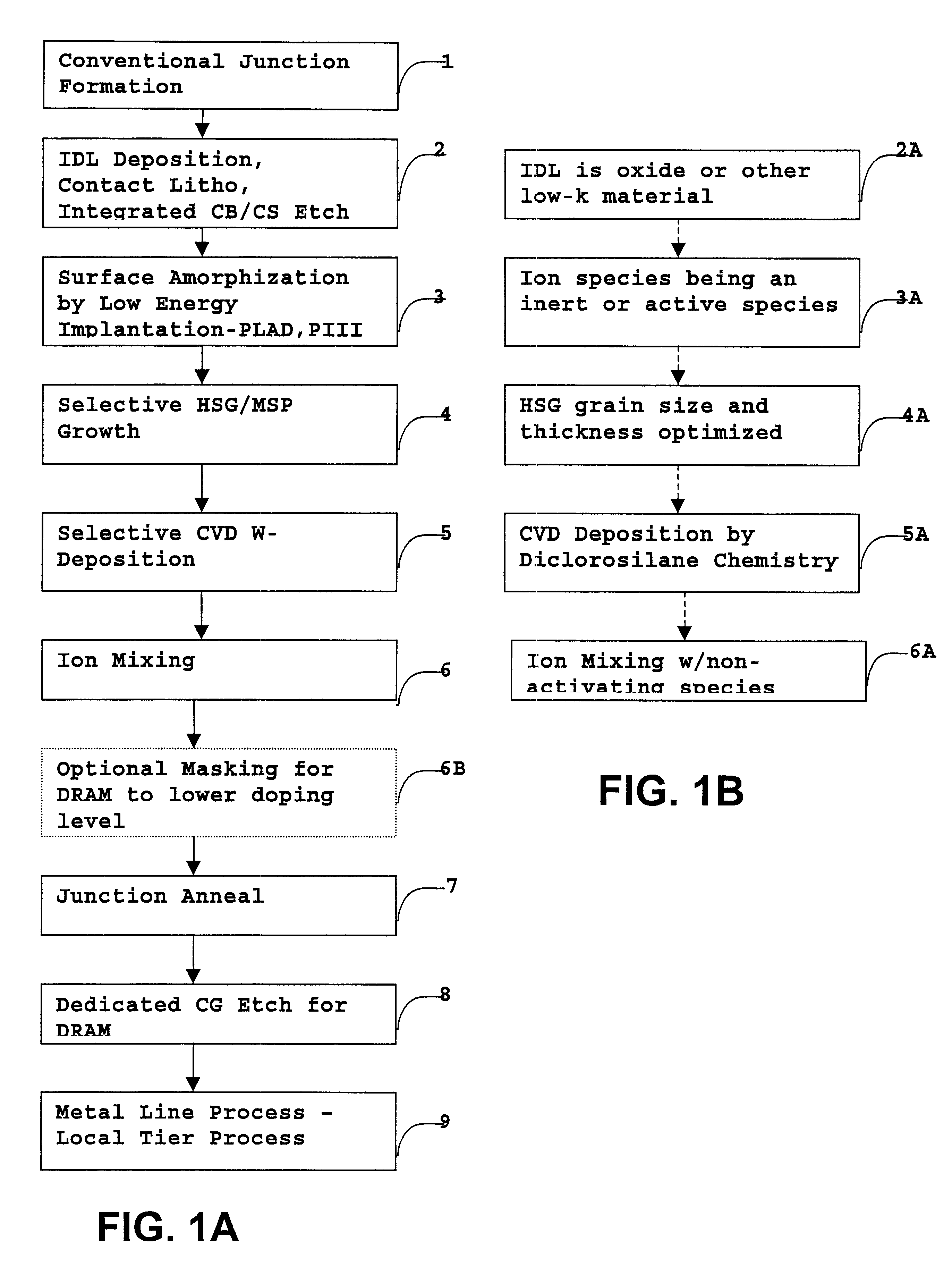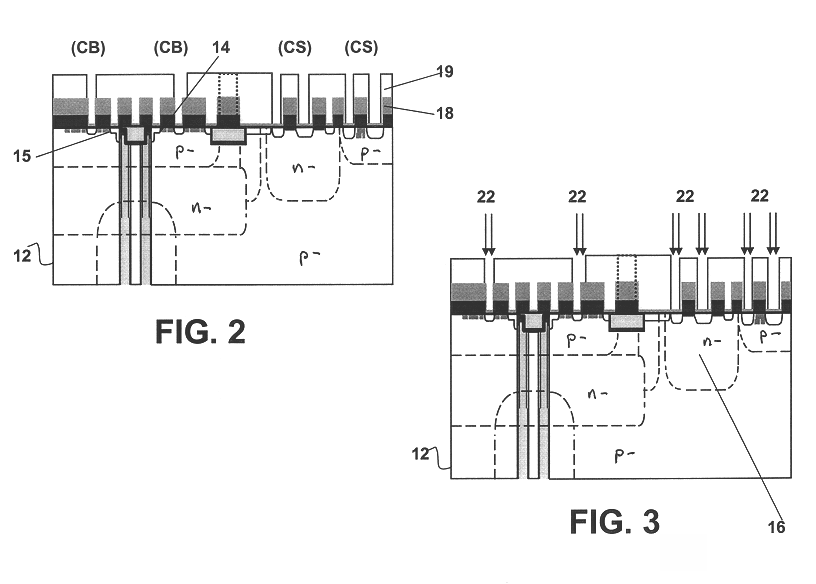Advanced contact integration scheme for deep-sub-150 nm devices
a technology of advanced contact and sub-150 nm, which is applied in the direction of semiconductor/solid-state device manufacturing, basic electric elements, electric devices, etc., can solve the problems of shallow junctions, no universal proposal to make advanced contact meeting ultimate requirements, and existing process integration schemes that fail to meet contact requirements
- Summary
- Abstract
- Description
- Claims
- Application Information
AI Technical Summary
Problems solved by technology
Method used
Image
Examples
Embodiment Construction
Advanced metal silicon (MS) contacts require high doping to form low resistance ohmic contacts. At these heavily doped MS junctions, the electron emission (TE) is dominated by field emission (FE) and thermal-field emission (TFE), leading to higher contact conductivity. However, a very high surface concentration of dopants naturally leads to deeper junctions because of concentration dependent diffusion. This effect transiently increases following a high-energy implantation step due to the anomalous diffusion effect of transient enhanced diffusion (TED). This transient effect results from the thermal treatment (anneal) of the silicon that is necessary to activate the implanted ions (i.e., to move the dopant atoms to substitutional sites), and to remove residual implantation damage. In this way, the objective of low R.sub.C and shallow (X.sub.JC) work against one another.
Furthermore, silicidation on heavily doped Si is often considerably more difficult than that of undoped Si.
To overco...
PUM
 Login to View More
Login to View More Abstract
Description
Claims
Application Information
 Login to View More
Login to View More - R&D
- Intellectual Property
- Life Sciences
- Materials
- Tech Scout
- Unparalleled Data Quality
- Higher Quality Content
- 60% Fewer Hallucinations
Browse by: Latest US Patents, China's latest patents, Technical Efficacy Thesaurus, Application Domain, Technology Topic, Popular Technical Reports.
© 2025 PatSnap. All rights reserved.Legal|Privacy policy|Modern Slavery Act Transparency Statement|Sitemap|About US| Contact US: help@patsnap.com



